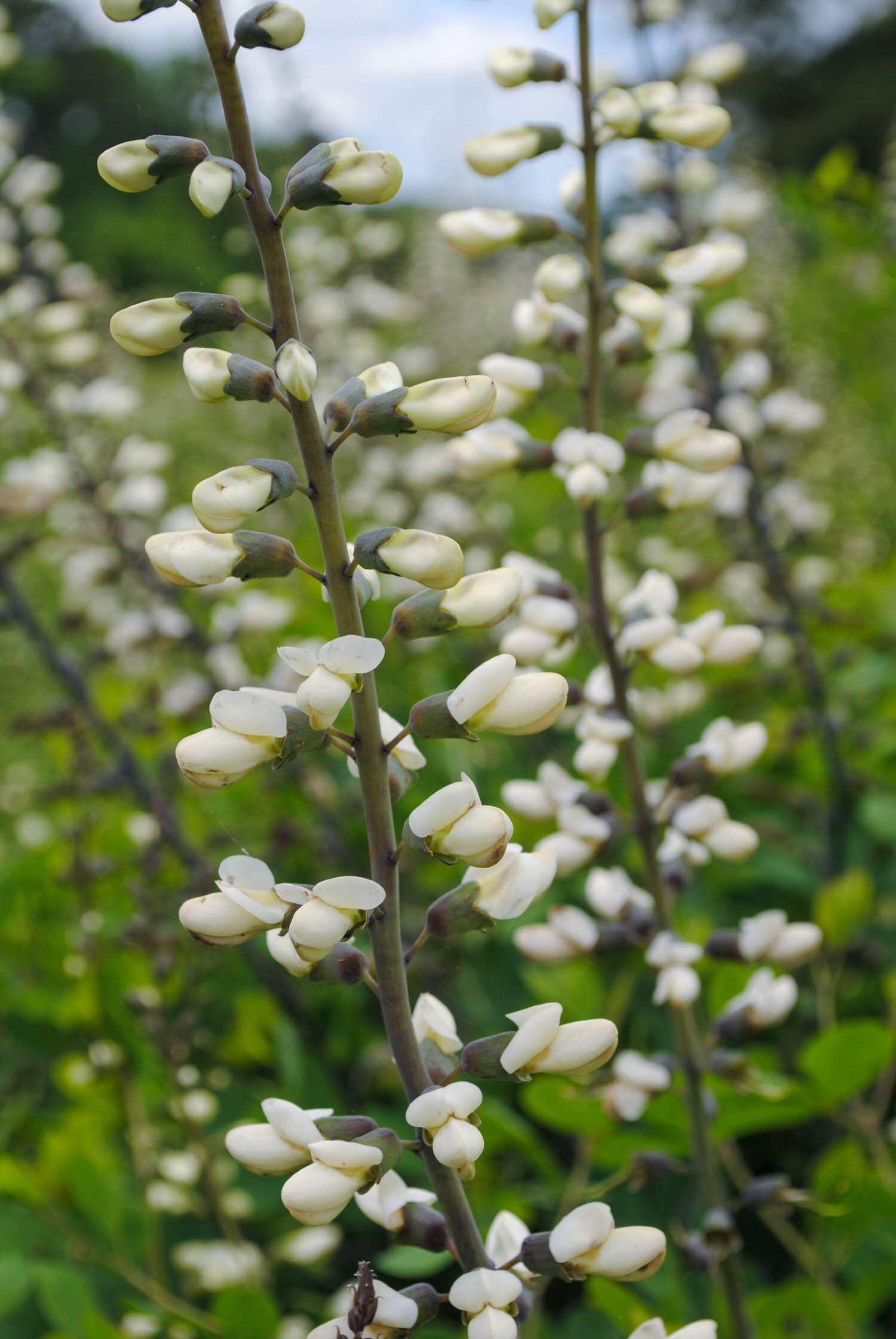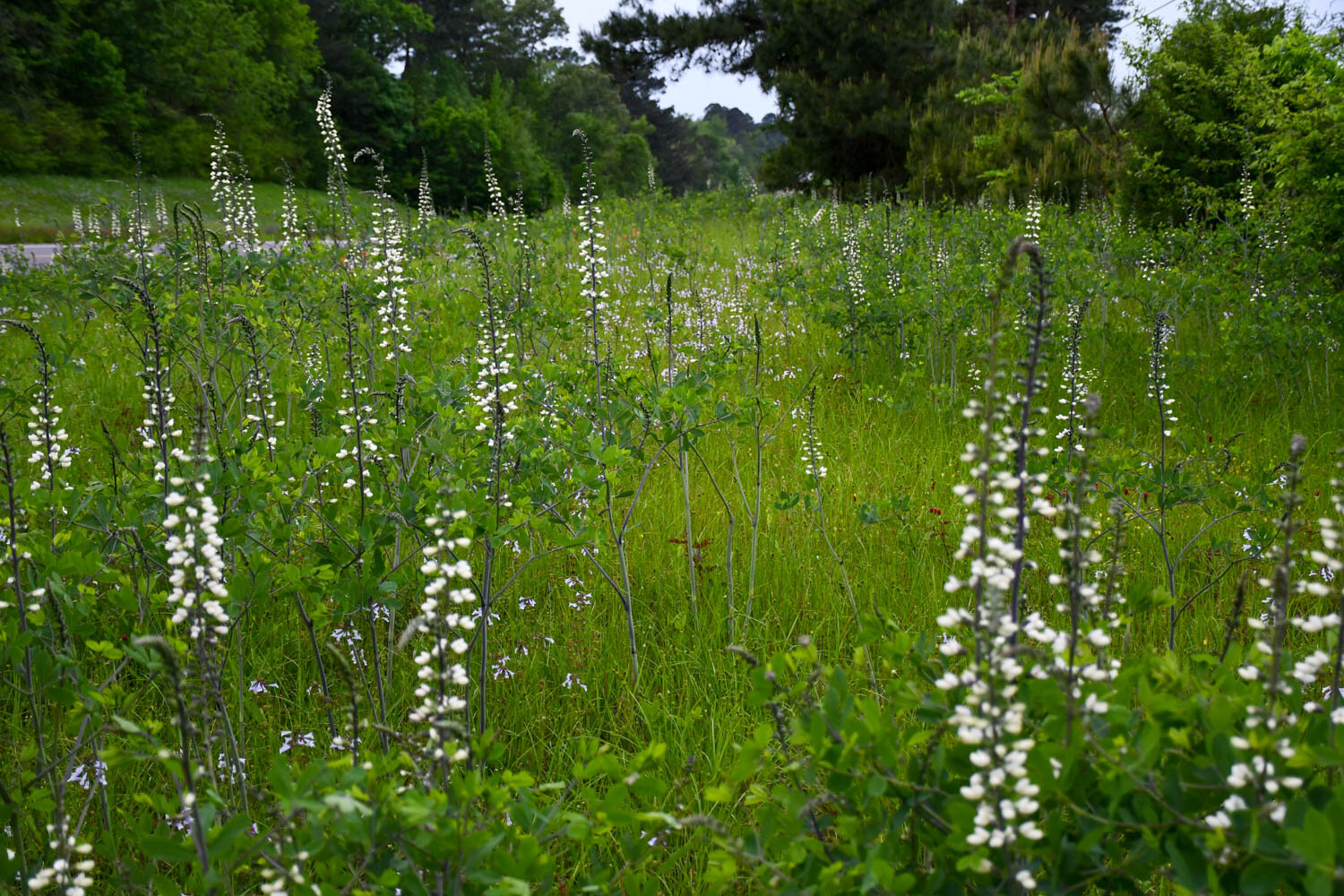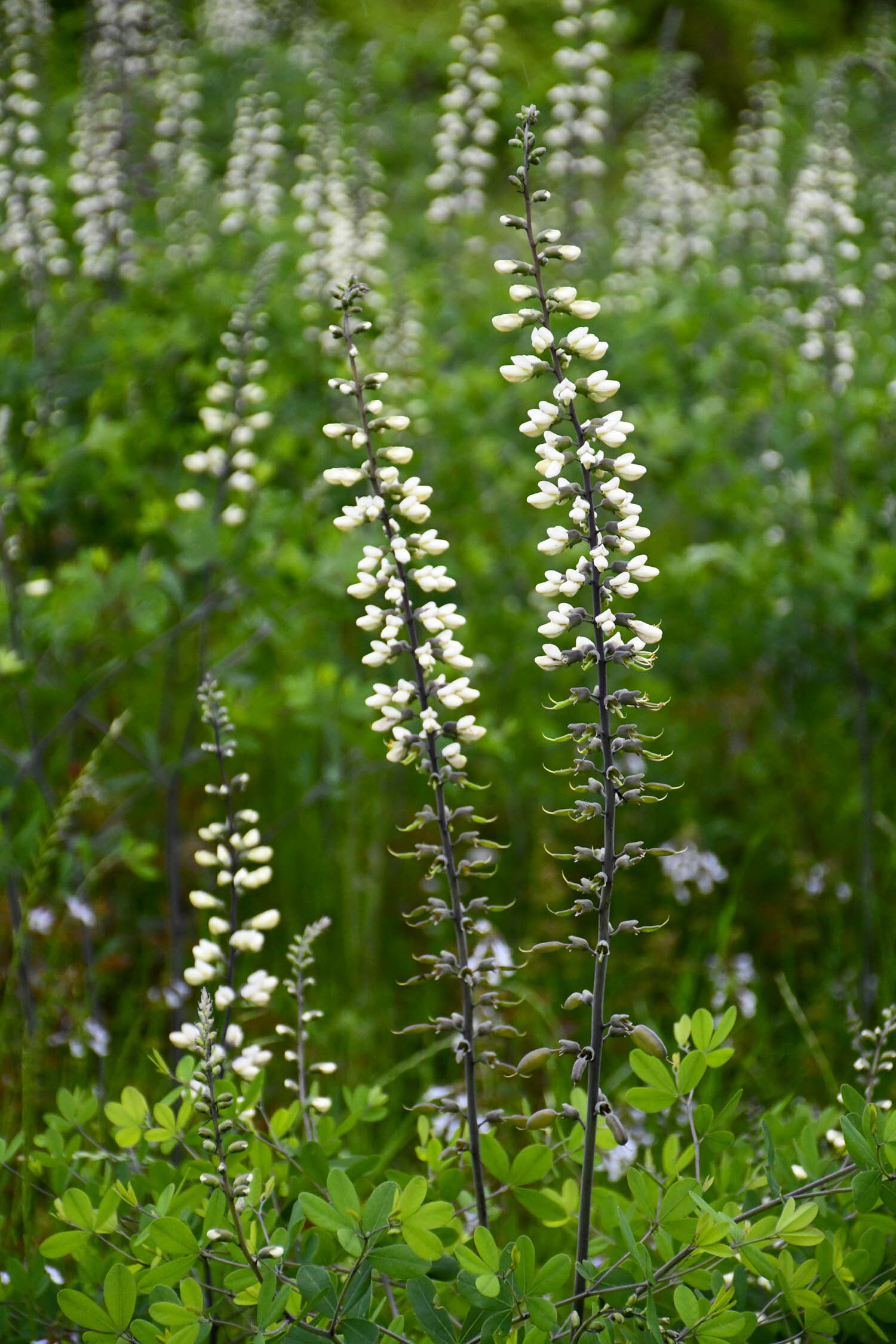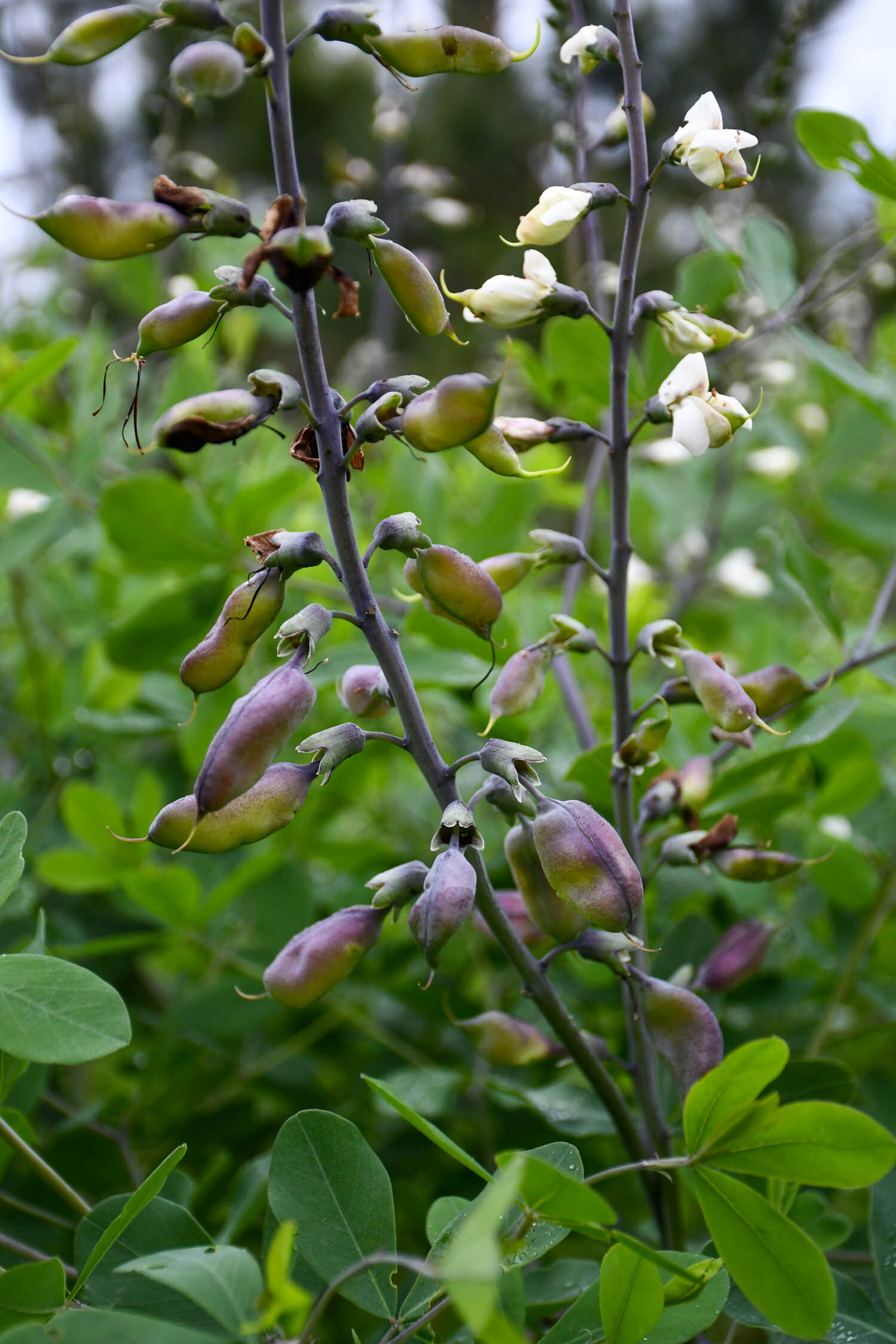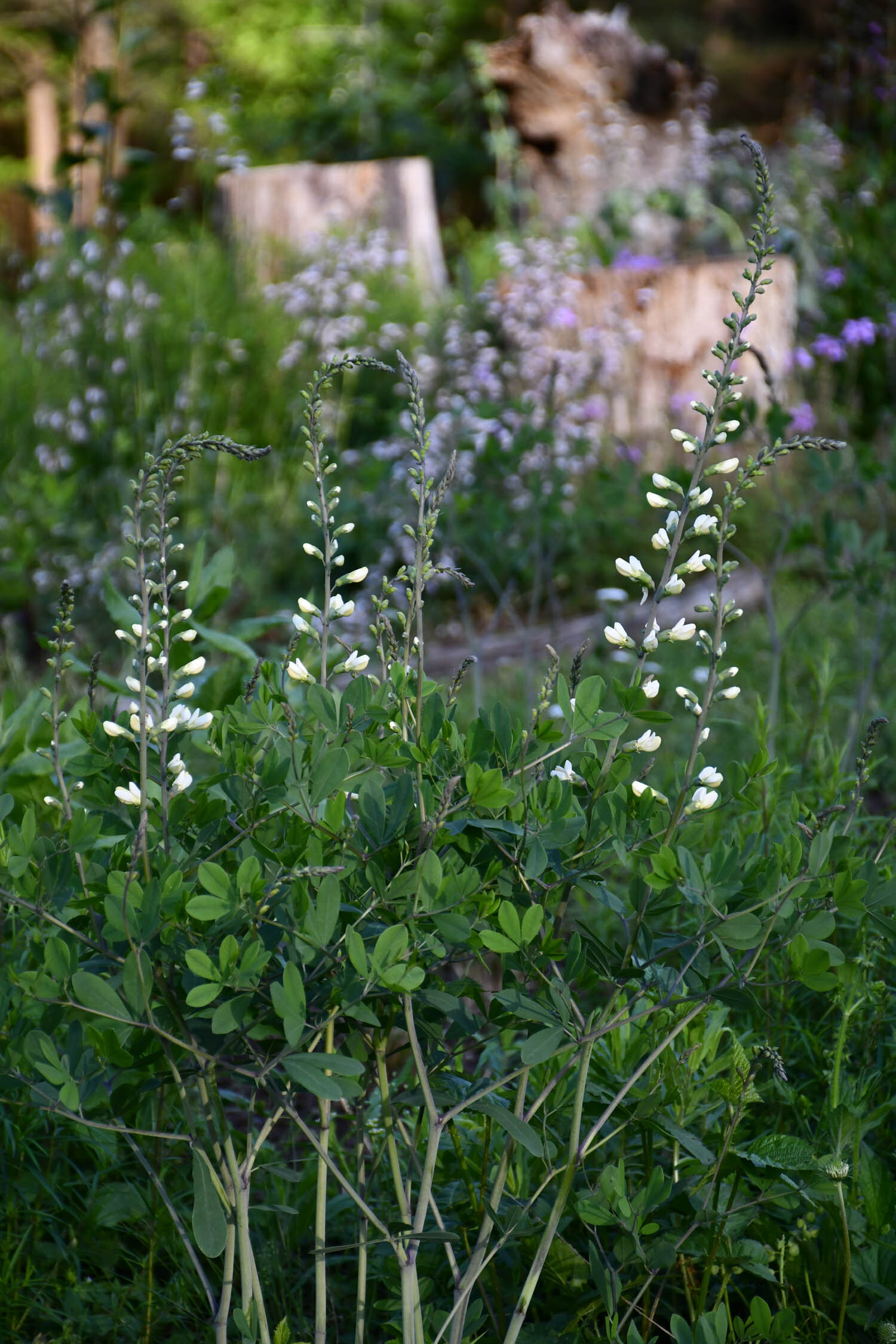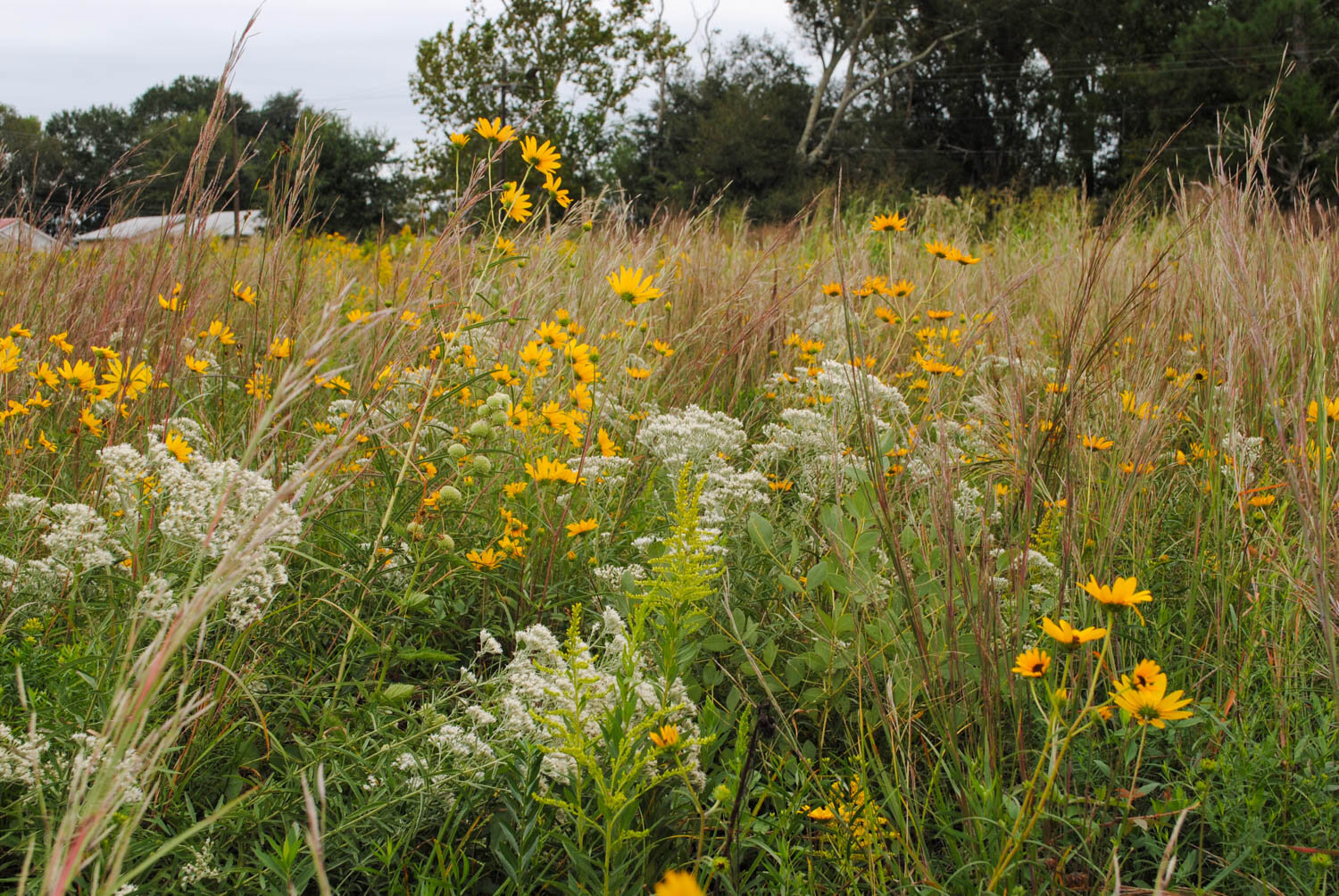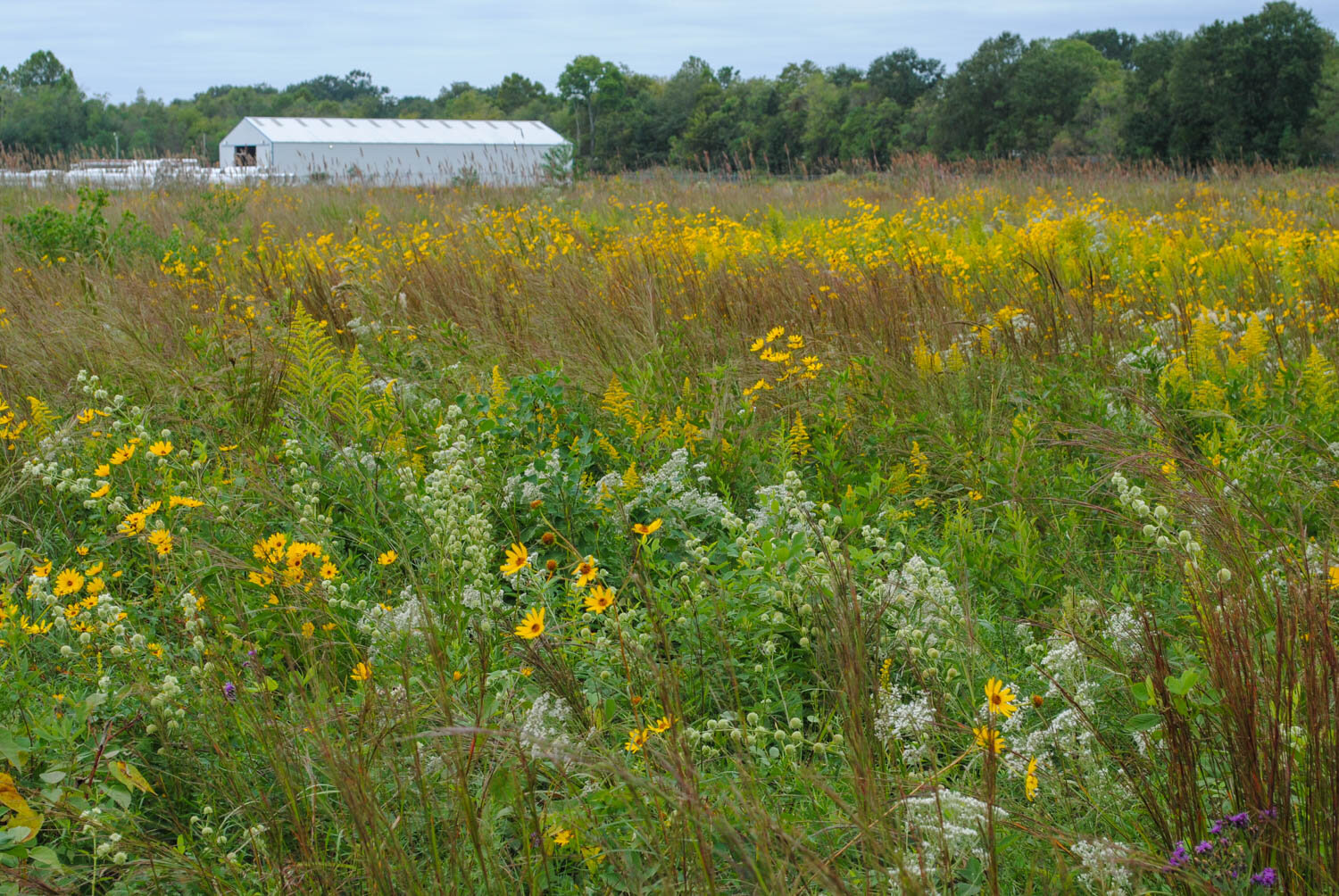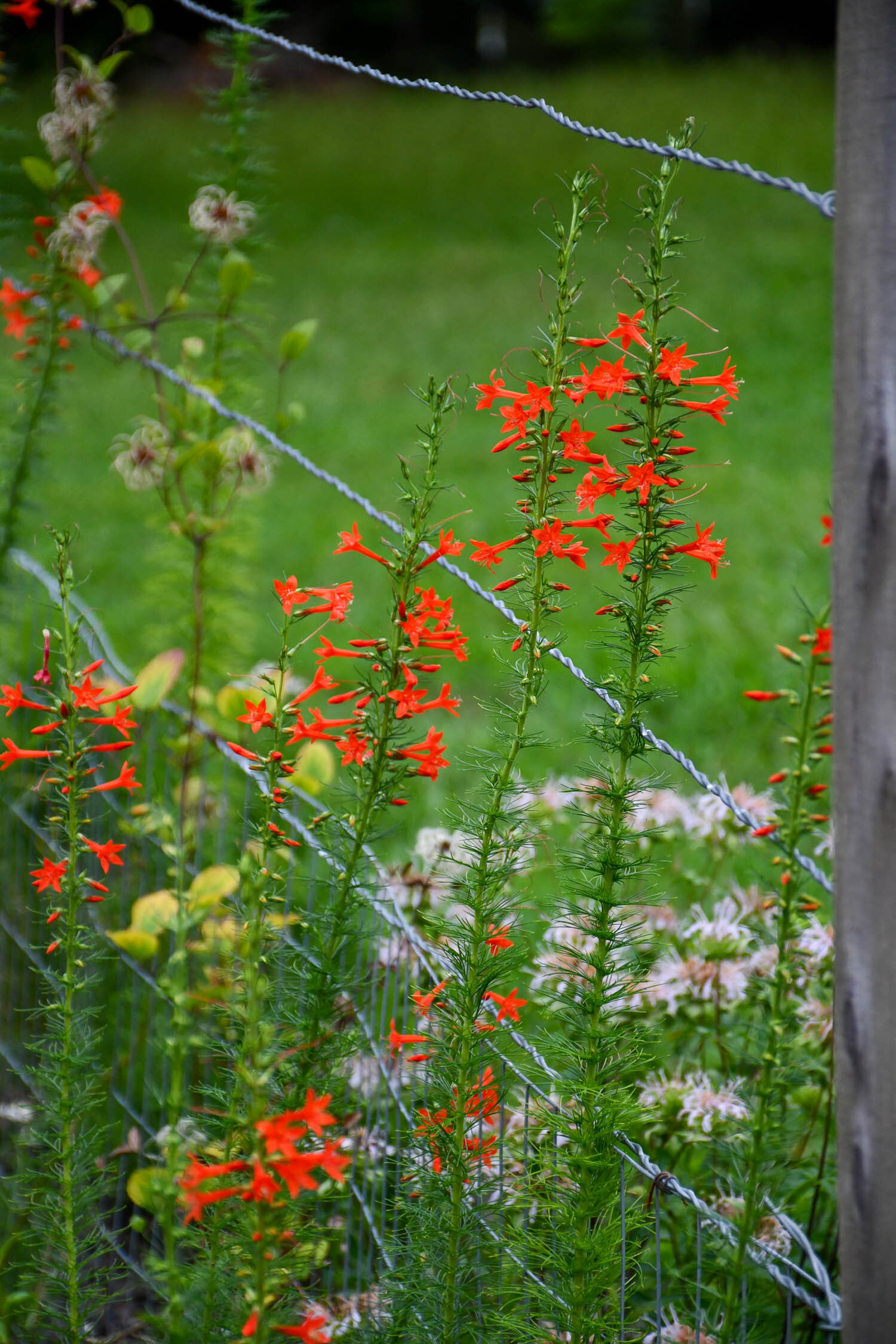Red is one of my favorite colors. I’ve joked since a kid that I love it so much that it is part of my name, Jared. I even love variations of the hue—scarlet, coral, vermillion, crimson, cherry, garnet, and the list goes on.
Red is a bit of an unusual color to have on native flowers. Think about it. You can probably count on your fingers and maybe toes native southeastern wildflowers that feature this intense warm color. Most flowers that are not wind pollinated seem to have purple, yellow, pink, or white adorning their petals. But, red flowers are a bit rarer and likely evolved for the hummingbird pollination syndrome since birds can perceive this hue better.
I was delighted after I moved to Texas to add another red flower to my plant palette, scarlet penstemon. I first saw Penstemon murrayanus in a garden bed in Nacogdoches. I was so intrigued with its perfoliate leaves on the inflorescence that wrap all the way around the stem. The flowers looked like they were rising out of little teal green platters.
Perfoliate leaves on Penstemon murrayanus are an intriguing morphological feature. It is so neat how they wrap around the stem.
After buying our house, I wanted to add scarlet penstemon to my plantings. On the road to town one day I discovered some plants growing right under a power line back off the road. I was surprised to see this species thriving in sandy grit amongst Yucca. But, this site helped me understand the conditions where it grows.
A small population of Penstemon murrayanus growing along the roadside in Nacogdoches county.
These plants I found provided a source of genetics for me to get my plants started. I collected seed after the seed capsules dried, but I learned that getting the seed to germinate is a challenge. The first year, I sowed seed at the start of winter to allow them to naturally stratify, but I only had two seedlings emerge out of the batch. Fortunately, they flower the second year after their attractive glaucous green foliage bulks up for the first growing season. While I love the height the plants get, they are also see through, so they can be planted at the front or the back of the bed and not impede the view. Their opacity allows me to sit on my porch and easily watch Ruby-throated Hummingbirds dot from plant to plant.
I like how I can see through the inflorescences of Penstemon murrayanus.
The purple in the stem here created a great color echo with the Prunella vulgaris behind.
I should add that I have had my challenges growing it. The foliage and even sometimes an inflorescence will die back to the ground due to a fungal disease. My guess is that my soil is more dense than the sandy soil where I found this species and holds more water. This issue seems to be a common one with Penstemon in the wetter parts of the country.
Going back to the challenge of getting new plants started, I was able to collect enough seed off my plants this year that my graduate student Zy Tippins was able to see if germination could be enhanced on Penstemon murrayanus. Her master’s thesis has been focusing on the use of gibberellic acid and liquid smoke to improve seed germination of native perennial seed. Gibberellic acid is a plant hormone that promotes germination. Liquid smoke can contain karrakins, another germination promoting hormone. There’s research that demonstrates after a fire passes through an ecosystem that karrakins are produced and help increase germination of some plant species. While gibberellic acid can be a bit of a challenge for home owners to acquire, smoke water is readily available from grocery stores. Zy was seeing if smoke water could be used with or without gibberellic acid to increase germination.
As you can see from her research below, seed that only received water and no stratification had 9% germination; stratifying seed for three months increased germination to 20%. But, seeds that had smoke water and three months of stratification had 46% germination! That means with using smoke water and then moist chilling the seeds in the fridge you can almost quadruple seed germination over the control. This data was some of the most exciting from her work. She’s finishing up her thesis this summer, so I’ll definitely post the link later if you want to learn more about her research.
Penstemon murrayanus seeds that were treated with a dilute smoke water solution and then stratified for three months had better germination (46%) compared to the non-stratified (9%) and stratified (20%) control. Thanks to my graduate student Zy Tippins for sharing this slide with me.
My hope is that with her research Penstemon murrayanus will become more available in the trade now that we better understand its germination requirements. Yes, it is an obscure perennial, but it certainly deserves wider use in our gardens.






